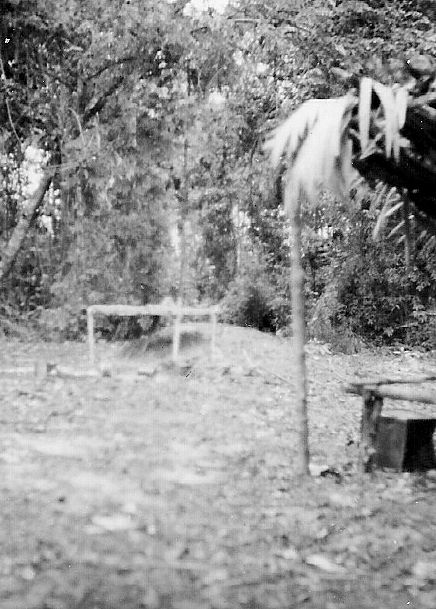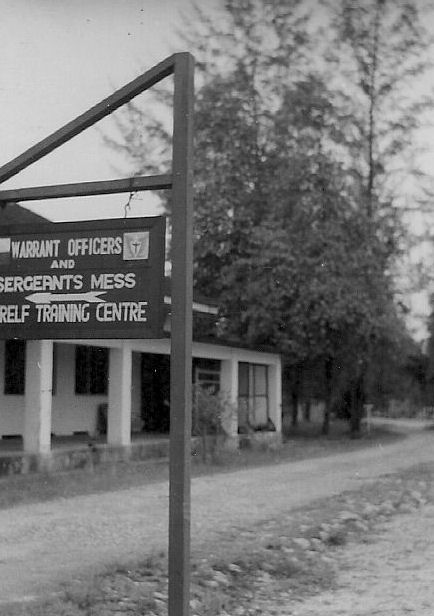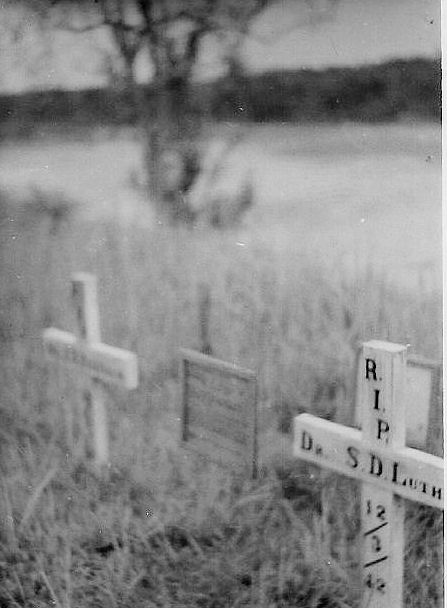Jungle Lore
There were many ways in which the R.A.F. boosted aircrew morale in the Far East during the Malayan Emergency. In their wisdom they took two crew members from 84, 45 and 60 Squadrons together with a few members from the F.A.E.L.F. Training centre H.Q. at Tampoi Barracks Johore, added a few Gurkha’s, gave them iron ration packs, a compass, a 303 rifle and a Smith & Wesson revolver with ammunition, kitted them out in Jungle Green with lace up boots, then took them in an army lorry deep into the ‘Kota Tingi’ Bandit Country of Johore, dropped them off and told them to carry out a ‘bandit patrol’ and find their own way back to base.
The idea being to hone our survival instincts should we have to bale out over the hostile jungle and depend on living off that jungle until we found habitation or got devoured by the ‘creepy crawly’ jungle life, alternatively until we were rescued or captured by the C.T. In those days R.A.F. aircrew had a $1000 dollar tag on their heads.
So on 4th December 1950 I became one of a team chosen to carry out this ‘training exercise’ , which ended on December 9th.
We each were provided with a small haversack in which was placed one days rations for all the team. Mine consisted of a 3lb tin of tongue which was to be part of our final day’s meal – so I had to lug this around for the longest time. What a joy since pushing our way through the jungle with all our ‘kit’ meant that this rather heavy haversack kept bouncing and rubbing on my hip until I had soon developed a ‘bed sore’ type raw spot.
The primary jungle – that area where cultivation by humans has not occurred is relatively easy to traverse since only fallen trees, rotting leaves etc, are slight obstacles. It is the secondary jungle – areas that have been cut down and cultivated then abandoned which is a problem – the growth called ‘Bluka' – which you have to tunnel your way through. As you can see from the photographs below. The expressions on the faces seems to say ‘where the hell are we? We are lost’.
|
|
|
At the end of the first day (remember that near the equator you get a twelve hour day and a twelve hour night) we had to construct our own shelter ( see photo) p.s . that small table like structure was for sleeping under, not eating off! I built mine on a slight incline, in case it rained so the water could run off. Unfortunately I kept rolling out and ended up using my rifle as a ‘stay’ to keep me under cover.
|
|
|
So at the end of the day you - (1) Found some fresh, clear running water. i.e. a stream, walked upstream for a ¼ mile to ensure there were no dead animals etc in it, filled your flask, added your sterilisation tablets and allowed it to stand for half an hour before drinking it. (2) Cut and collected wood, bamboo stems and fronds and built yourself a shelter, since it gets chilly and damp at night. (3) Made a fire cooked your rations and ‘brew up’. (4) Took off your clothes and removed any leeches by dabbing them with a cigarette or a dab of salt making sure that they were not pulled off leaving their head in your skin with their mouths in the wound. (5) We endeavoured to get some ‘kip’ with all the jungle noises around you. With the renowned fearsome Gurkha’s on guard all night you always felt safe.
How good it was when daylight dawned and we could brew up again and eat our iron ration breakfast. Then it was time to continue our jungle ‘trek’ as quietly as possible. We came to a clearing and a ‘basha’ hut which we surrounded and crept inside to be met by a startled family who’s I.D. we checked. Their bed consisted of a raised platform made from thin logs with a single log for a pillow.
Afterwards we made our way by compass through more primary jungle which with the closed canopy 100-200ft above gave it all a twilight appearance. The only vegetation growing on the floor carpet appeared to be brilliantly coloured orchids.
We fortunately didn’t come across any undesirables and spent the daytime either in dense jungle or along old tracks. On the final day I was thankful to get my heavy 3lb tin of tongue out of my haversack – but - when we punctured the lid to open it – the contents sprayed out – it was rotten and the smell was shocking. No lunch that day, only a very sore hip remained.
We arrived at our ‘pick up point’ and were transported to H.Q. and were billeted overnight in an old wooden building which we were informed was part of an old lunatic asylum which the Japs had taken over in 1941/2 and killed all the patients. Also all the staff who were made to dig their own graves before being bayoneted to death and buried outside of their own quarters (See photo).
|
|
|
Around the outside of the hut were many human bones and broken skulls, some skulls being used indoors as cigarette ash trays.
Whilst in the jungle I had encountered some very large black flying beetles whose wings made a loud noise when they landed on the trunk of tree. Trees with a diameter of fourteen feet or more. Large snakes would glide across the path in front of you – quite happy to get away rather than attack you and in most of the primary jungle there was not much edible matter to be found.
In conclusion it would appear that baling out over the primary jungle would mean that you would land in the top of the dense green canopy at least 100ft above ground and would need a long rope to get down, best to stay up there with the monkey’s and other livestock and await rescue. Should you land in secondary jungle you would likely as not get severely injured on the final descent and need to carry large plasters and a pair of crutches.
So what did the ‘Jungle Lore’ do for me? Taught me to stay with the "Brigand" and pray!






